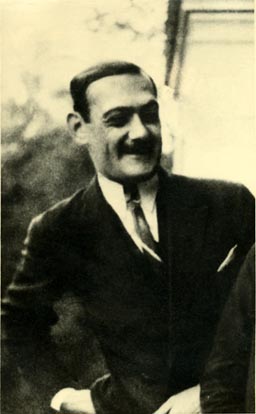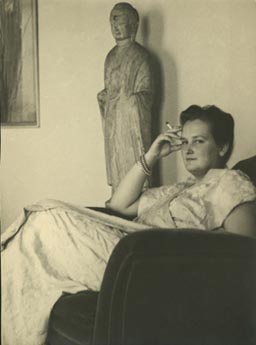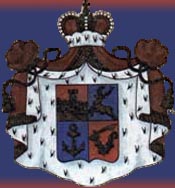
Noble Families: Post Bolshevik Period
Introduction
Noble Georgian families can be traced to the 7th Century AD. The concept of nobility is generally linked to history, social status, and legalities. The majority of noble families received titles as a result of their intelligence, military service and close relationships to royalty. All noble families created myths about the origins of thier families; for example, the Bagratids were alledgedly related to the Biblical King David. At the end of the 19th Century there were over 300 Georgian noble families. They were divided into two parts: tavadi (higher social classes) and aznauri(lower status). Chavchavadzes belonged to the tavads. After the abolition of the Georgian Kingdom in 1801, Georgian noble families were incorporated into the Russian system of governance. The Chavchavadzes, according to John Bagrationi, received the title of gentry in 1680 by King Erekle I as a result of their service in the Tusheti province. Afterwards, King Teimuraz promoted them to the rank of minor nobility and bestowed them serfs and royal land. Finally, Erekle II acknowledged their noble title of Chavchavadzes. There are several brancehs of the family; however, this site focuses on the descendents of Garsevan, Alexandre's father. What follows is the story of one noble who decided to resist the Soviet occupation.

Merab Jorjadze
Merab Jorjadze (1900-1947)
Merab Jorjadze, the great grandson of Alexandre Chavchavadze, lived much of his life in exile after fighting as a partisan against the Bolshevik regime established in Georgia by Soviet Russian forces in 1921.
Resistance
Born into a prominent aristocratic family, Jorjadze studied at a prestigious private school in Tbilisi that his father David Jorjadze had helped to establish, the Tiflis Gymnasium for Nobility. (In 1919, the school was incorporated into the Tbilisi State University, and David Jorjadze donated his library to it.) The period of 1918-1921 was a chaotic period: Many members of noble families resisted Russian takeover.
With the invasion of the Soviet army in early 1921, Georgia lost its independence, and the government of the short-lived independent Democratic Republic of Georgia was forced to flee, first to Turkey and than to France. It was only through an extraordinary stroke of luck—and some helpful neighbors—that Merab Jorjadze escaped arrest by the Extraordinary Commission, the predecessor of the infamous Soviet secret police, the KGB. On the night the Soviets came for him, Jorjadze was asleep at his home, which was one of two flats on the third floor of an apartment building. Luckily, the police who had come to arrest him initially pounded on the door of the other apartment on the floor, which belonged to the Surmava family. The Surmavas told the Soviet agents that getting to the Jorjadze apartment would require them to return to the yard and re-enter through a separate entryway. In the brief interval while the agents went downstairs, rounded the building, and climbed back up to the third floor, the Surmavas warned Jorjadze and his brother-in-law Baki Tutberidze, who was also in the apartment and was wanted by the Soviets because of his role in the former government of independent Georgia. The two men crawled from their balcony to the attic, climbed to the roof, jumped down to the street, and disappeared.
Tutberidze went into hiding in Tbilisi, but was eventually tracked down by the Bolsheviks, sent to Metekhi prison, and executed, along with other former officers of the independent Georgia. Jorjadze took refuge in Dusheti, a town situated in the Mtsketa-Mtianeti region, a little more than 50 kilometers from Tbilisi. There he was thrown in prison. If he had not been released from prison in Dusheti by Kakutsa Cholokashvili’s fighters, the Bolsheviks would have executed him. In 1922, Jorjadze joined the guerilla resistance to Soviet rule led by Kakutsa Cholokashvili. Cholokashvili’s partisans engaged Soviet forces in intermittent skirmishes for several years starting in 1921, but in the end they faced hopeless odds after the brutal suppression of their most ambitious campaign, the so-called August Uprising of 1924. In 1924, Jorjadze fled to Turkey with other remnants of the resistance, including Cholokashvili himself. Both men subsequently emigrated to France, where Cholokashvili died of tuberculosis in 1930; today, he is regarded as one of Georgia’s great national heroes, and a symbol of Georgian nationalism.
France and Spain
In 1926, Jorjadze enrolled at Paris’s renowned Saint-Cyr Military Academy, where he studied for a number of years. Upon his graduation, he was offered a career in France’s military, on the condition that he adopt French citizenship. However, he declined, and remained unemployed despite his first-rate military education and valuable field experience. In the following years, against the backdrop of the Great Depression that spread across the globe in the late 1920s and early 1930s, the penniless Jorjadze was reduced to performing odd jobs to survive.
In 1936, civil war broke out in Spain, and Jorjadze went to fight for the Nationalists led by Francisco Franco, who supported the monarchy and rallied to the cry "God, Country, and King." While Franco’s cause was deeply sullied by its fascist sympathies and ties to Mussolini’s Italy and Hitler’s Germany, Jorjadze—with bitter memories of the Soviet suppression of his own people still in his mind—no doubt saw the Soviet-backed socialist forces against which Franco was struggling as the larger threat.
When he returned to France, a left-wing socialist party was in power. After French authorities discovered that Jorjadze had been fighting against their socialist compatriots in Spain, they sought to expel him. Having rejected French citizenship, he had little recourse. Sparing him deportation to the Soviet Union—of which Georgia was now a part, and where the former independence fighter surely would have faced grave consequences—the French authorities allowed him to cross into Luxemburg, where he was taken into custody by that nation’s border guards. There, Jorjadze asked to make a phone call; he dialed and waited. Within an hour, a Rolls-Royce arrived. Its occupant was his fellow alumnus of Saint-Cyr Military Academy, the Prince of Luxemburg.

Olga Scherbatova
Marriage, Illness and Death
With the Prince’s assistance, Jorjadze soon had the necessary documents to take up residence in Belgium, where he made the acquaintance of Olga Scherbatova, whom he married in 1940. Scherbatova came from a prominent family of Russian nobles. Her father, Pavel Scherbatov, had founded the Museum of History in Moscow, which still stands in Red Square. Her mother’s grandfather was Alexander Baryatinsky, the Caucasian Governor-General in Tsarist Russia to whom Shamil ultimately surrendered. Among the family heirlooms Olga had taken with her when she left Russia following the Bolshevik revolution was a beautiful gold Georgian cross, which Alexander Baryatinski had presented to her mother.
The first years of the couple’s married life coincided with World War II. After occupying Paris, German forces invaded Belgium, and Merab and Olga became involved in the anti-fascist struggle there. However, Merab Jorjadze did not live to see the liberation of Belgium; in 1943, he fell gravely ill and died. On his deathbed, he asked his wife to bring him the Georgian cross she had received from her mother; he kissed it and said: "What belongs to the nation must be returned to it." Eventually, Olga was able to fulfill his dying wish, and brought the cross back to Georgia.
Olga Scherbatova-Jorjadze survived the war, and in the late 1950s, she traveled to Georgia to see the Tbilisi house where Merab had lived as a young man. However, fearing that her presence would only add to the misfortunes that her husband’s sisters were suffering under Communist rule, her stay was brief.
After Olga Scherbatova-Jorjadze’s death in 2007, Maia Kokochashvili, the granddaughter of Merab Jorjadze’s sister Maka, went to Brussels for the reading of Olga’s will, which bequeathed the following items to her:
- An engraving of Russian Tsar Nicholas I;
- An engraving depicting a military plan of the Russian fleet on the Black Sea;
- An engraving of Alexander Baryatinsky, Governor General of the Caucasus;
- Engravings of several Russian cities;
- An engraving of Russian Tsarina Ekaterine II, the godmother of Alexandre Chavchavadze;
- Photographs of Alexandre Baryatinski;
- Photographs of Tsar Nicholas II and his wife;
- Books in French and Russian, dated 1771-1857.
These items will be donated to the Alexander Chavchavadze Museum at Tsinandali, after the restoration project is completed.
Source bibliography:
- Manuscript, Bagrationi, John. Concise Description of the Surnames of Nobility and Gentry Living in Georgia. Tbilisi: Center of Manuscripts.
- Guruli, Vakhtang. Sakhartvelos istoria, XX saukune [Georgian history: XX Century]. Tbilisi: Tbilisis saxelmcipho univesritetis gamomcemloba, 2003.
- Gvarishvili, Osiko. Avadmosagonari 1937 tseli. [Badly reminded 1937 year]. Batumi: Achara, 1998.
- Kirtadze, Nestan. Kaen das aris dzma sheni?!Qartvelta istoriis siskhliani phurtslebi 91921-1930) [Caen, where is your brother?! Bloody papers of Georgian history (1921-1930)]. Tbilisi: Merani, 1998.
- Mgaloblishvili Michael. 1937: represirebulis mogonebebi [ 1937: Memories of the represses’]. Tbilisi: Merani, 1990.
- Topchishvili, Roland. Sakartvelos Etnologia [Ethnology of Georgia]. Tbilisi: Tbilisis Universitetis Gamomcemloba, 2008.
[ TOP ]
